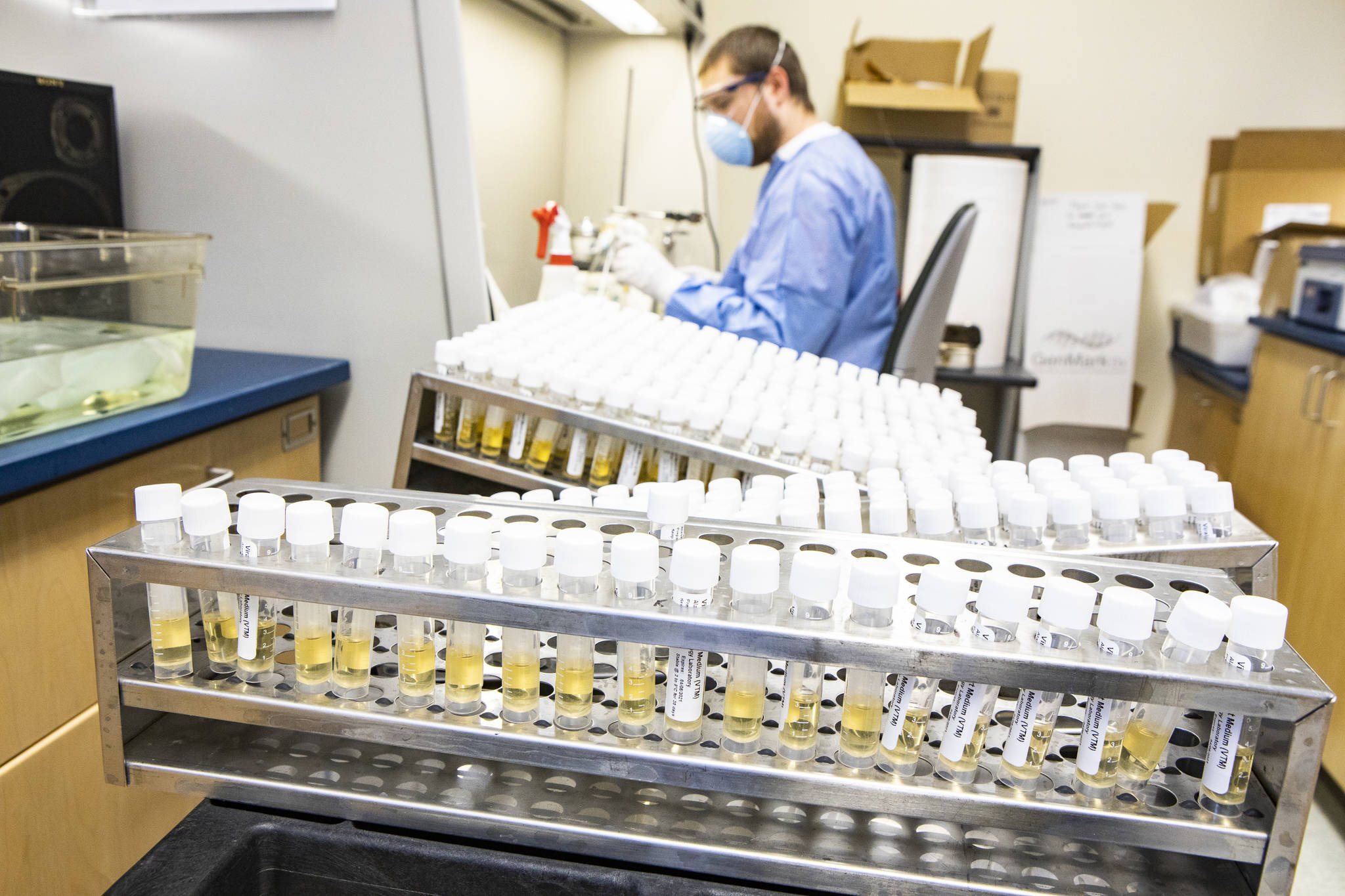As Alaska strives to reintegrate elective procedures and dental operations into daily life, testing centers are readying for rising numbers of tests.
But can Juneau handle that rising tide in-house at the speed required by state mandates?
“We were averaging in the evenings about 6-7 people a night,” said Joe Mischler, Capital City Fire/Rescue officer overseeing the testing site at the Hagevig Training Center. “That has changed. We’re starting to do pre-procedural testing.”
The number of tests conducted at the drive-thru testing site in the last several days has hovered between 15 and 20, Mischler said. CCFR is unsure at this time how steep an increase in tests there will be. More clients will require more testing, which Bartlett Regional Hospital has a capability to do in-house. But will that capability be enough?
“Long story short, we were finally able to turn on our analyzer this Monday. We feel it’s a much better method,” said John Fortin, the head of laboratory services at Bartlett Regional Hospital, in a phone interview. “Juneau is not a place that’s going to have these high throughput analyzers. The max run a day on that analyzer would be about 25 samples.”
Easing restrictions on services will flood testing sites with dozens if not hundreds of new people requiring testing to see professionals like dentists, Mischler said. While the state has mandated that patients should be tested within 48 hours of entering a dental facility, Fortin is worried that Juneau doesn’t have that testing capability and that sending the tests elsewhere to be processed will go beyond that deadline.
“There’s at least 30 dentists in town,” Mischler said. “If we start getting their clients, it’s going to be pretty substantial.”
The in-house testing can keep up with people displaying symptoms, Fortin said, but expanding the tests from 20 people a day to the 150 that full scale dental openings would require is beyond BRH’s capability, Fortin said.
“Once they’ve been validated and you have trust in them, when you have a symptomatic person, you can test them right away,” Fortin said. “Our community needs high-throughput testing. Bartlett is set up as an acute care facility.”
That specialization means that Bartlett doesn’t have the expensive testing equipment that’s nonessential to treating more immediate health concerns. Analyzers can cost more than $500,000, Fortin said, and can be very manpower-intensive. CCFR and BRH are realigning their hours and procedures for the most efficient and rapid testing efforts.
“Last weekend was the first time we did morning testing and procedures,” Mischler said. “We’re testing in the morning for the ones having procedures done so they get those results the same day.”
The Hagevig testing site has operated smoothly since its opening, Mischler said, requiring minimal fine-tuning.
“It’s pretty convenient for people to simply come on through a drive thru,” Mischler said. “We’ve made very, very minor tweaks since when we began.”
BRH is making steps toward being able to test for coronavirus antibodies, which may show if a person was previously infected, but the logistical chains are strained and slow-moving, Fortin said.
• Contact reporter Michael S. Lockett at 757.621.1197 or mlockett@juneauempire.com.
Think you need testing?
If you think you’re displaying symptoms, contact your primary health care provider or call the screening hotline at 586-6000. If you meet the criteria, a test appointment will be arranged.

